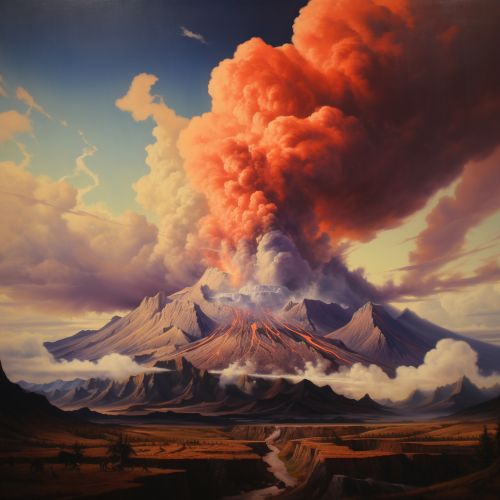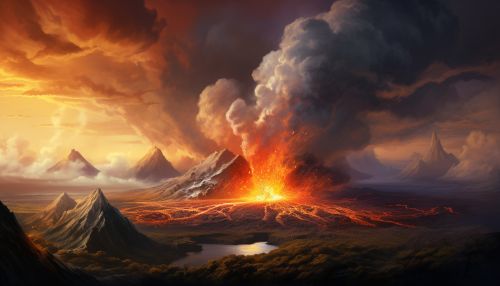Volcanism
Introduction
Volcanism refers to the phenomenon of eruption of molten rock (magma) onto the surface of the Earth or a solid-surface planet or moon, where lava, pyroclastics and volcanic gases erupt through a break in the surface called a vent. It includes subaqueous volcanic activity into the seafloor, eruptions into ice caps, which produce subglacial volcanoes, and eruptions capturing surface water that leads to phreatomagmatic eruptions.


Causes of Volcanism
Volcanism is primarily caused by the movement of tectonic plates and mantle plumes. The Earth's lithosphere is broken up into several large and numerous smaller tectonic plates, which move relative to one another. This movement can cause the plates to collide (convergent boundaries), move apart (divergent boundaries), or slide past each other (transform boundaries). These movements can lead to the formation of volcanoes and volcanic activity.
Types of Volcanoes
There are several types of volcanoes, including shield volcanoes, stratovolcanoes, cinder cones, and lava domes. Each type of volcano has a distinctive form and is associated with different types of eruptive behavior.
Shield Volcanoes
Shield volcanoes are the largest type of volcano on earth, with gentle slopes that resemble a warrior's shield. They are primarily built by the accumulation of low viscosity basaltic lava.
Stratovolcanoes
Stratovolcanoes, also known as composite volcanoes, are characterized by a steep profile and periodic, explosive eruptions. They are constructed from multiple layers of lava, tephra, and volcanic ash.
Cinder Cones
Cinder cones are the simplest type of volcano, built from particles and blobs of congealed lava ejected from a single vent.
Lava Domes
Lava domes are built by slow eruptions of highly viscous lava. They are typically circular with steep-sided walls and can grow for months or years.
Volcanic Eruptions
Volcanic eruptions can be explosive or effusive. Explosive eruptions occur when the magma is high in silica, which makes it highly viscous. This high viscosity prevents gases from escaping, leading to a buildup of pressure that eventually results in an explosive eruption. Effusive eruptions occur when the magma is low in silica, allowing gases to escape easily and the magma to flow out of the volcano.
Effects of Volcanism
Volcanism can have both positive and negative effects. On the positive side, volcanic eruptions can create new land, as seen in the Hawaiian Islands, and the ash from eruptions can enrich soil, making it more fertile. On the negative side, volcanic eruptions can cause loss of life and property, especially in populated areas. They can also affect climate, as the ash and gases released during an eruption can block sunlight, leading to cooling.
Volcanism on Other Planets
Volcanism is not limited to Earth. It has been observed on other planets and moons in our solar system, including Mars, Venus, and Jupiter's moon Io. These extraterrestrial volcanoes can provide valuable insights into the geologic history of these bodies and the processes that shape them.
